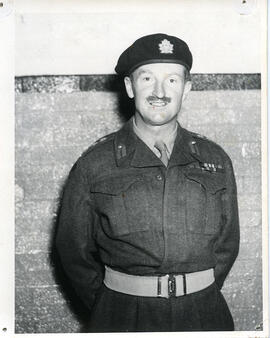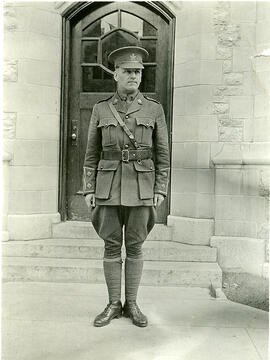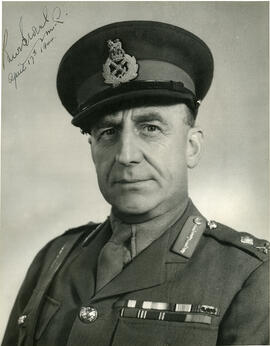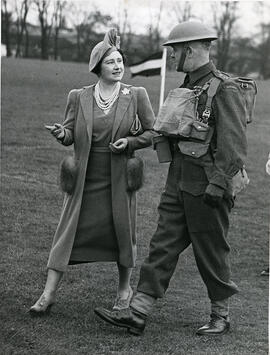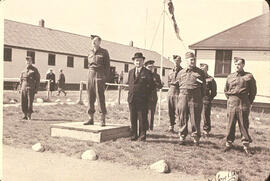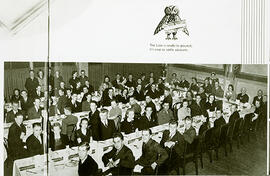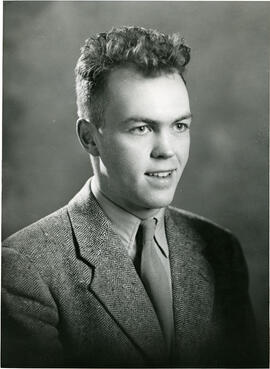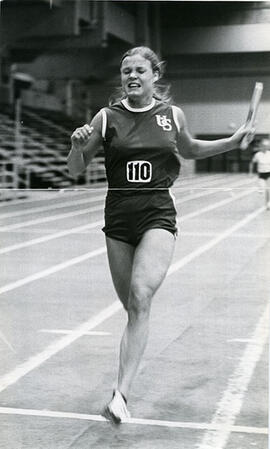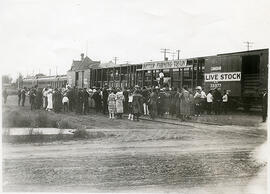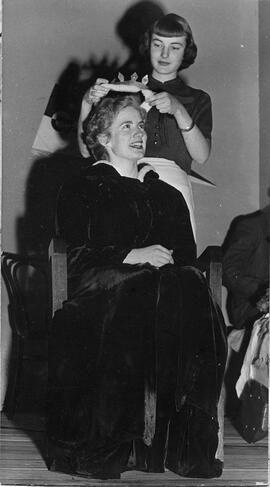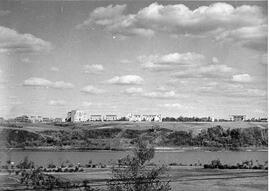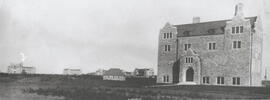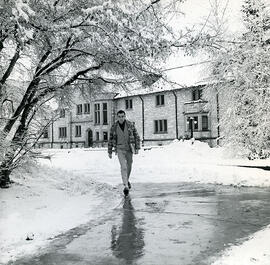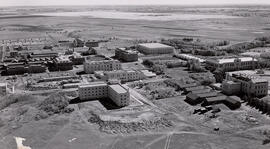Diane Jones, Huskiette pentathlete, running on an indoor track, coming to the finish line holding a baton.
Bio/Historical Note: Diane Helen Jones-Konihowski was born in 1951 in Vancouver and raised in Saskatoon. In 1967 she represented Canada internationally for the first time as a high jumper and javelin thrower. Jones won her first international medal, a high jump bronze, at the 1969 Pacific Conference Games. She represented Canada in the pentathlon at the Munich Olympics in 1972. Jones was a gold medalist in the pentathlon at the 1975 Pan American Games in Mexico City; that same year she was named Canada’s Female Athlete of the Year. Jones graduated from the University of Saskatchewan in 1976 with a BEd. In 1978 she won a gold medal at the Commonwealth Games in Edmonton and was named Canada’s Female Athlete of the Year for the second time in her career. Jones married fellow athlete John Konihowski in 1977; the wedding ceremony was carried live on CFQC-TV. In 1979 she won her second Pan American Games gold medal. Forced to miss the Moscow Olympics of 1980 due to the boycott that Jones-Konihowski strenuously opposed, she seriously considered going to the Soviet Union to compete as an athlete without a flag or nation. Jones-Konihowski eventually decided it was safer to not attend and athletically made her statement two weeks later at a pentathlon in Germany, winning gold, and beating all the Moscow 1980 Olympic medalists. During her career Jones-Konihowski ranked first in the world twice. Jones-Konihowski was awarded the Order of Canada in 1979 and inducted into the Saskatchewan Sports Hall of Fame in 1980. She was the recipient of the YWCA Woman of Distinction Sport & Recreation Award in 1988. In 1996 she was inducted into the Canadian Olympic Sports Hall of Fame. Jones-Konihowski has remained active in Canadian sports, having worked as a coach and sports administrator for many national athletic boards including Fair Play Canada, the Coaching Association of Canada, the Canadian Olympic Association, as well as the Canadian Centre for Ethics in Sport. In 2000 Jones-Konihowski led Canada’s Olympic Team to the Sydney Olympics as the Chef de Mission. She was presented with an honourary Doctor of Laws degree from the U of S in 2002. In 2005 Jones-Konihowski was elected to the board of directors of the Canadian Olympic Committee. Jones-Konihowski is a member of the Canadian Sports Hall of Fame (2020) and the Canada West Conference Hall of Fame (2021).

